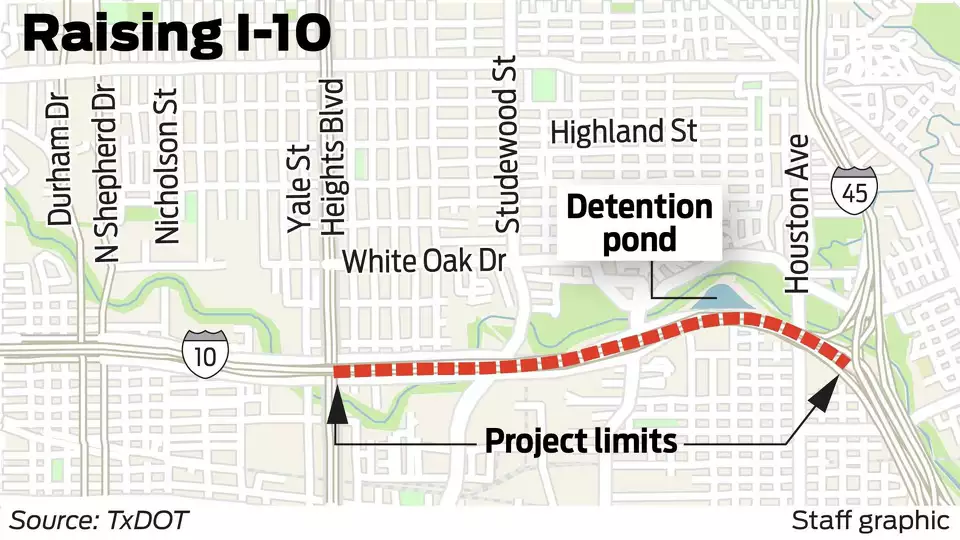The sun rises in the east, water is wet, etc etc etc.
Lifting Interstate 10 out of White Oak Bayou’s floodway is poised to cost taxpayers tens of millions of dollars more than anticipated, as bids to build the project came in above $400 million.
Last week in Austin, Texas Department of Transportation officials opened bids on the project to elevate I-10 between Interstate 45 and Heights Boulevard. The apparent low bidder, Webber LLC, offered a construction price of $407.8 million. Williams Brothers Construction, the only other firm to submit a bid, priced the job at $459.5 million.
If state highway officials accept the Webber offer, it would be $62.8 million more than officials estimated the work to cost, after increasing their prediction from the $312 million they expected two years ago. Combined with other assorted costs, such as right of way, the project’s total cost could top $440 million.
The price increase is not likely to make officials rethink raising the freeway.
“There is no delay or pause anticipated,” TxDOT spokeswoman Kristina Hadley wrote in an email, noting that all projects are still subject approval by the Texas Transportation Commission.
Of course it won’t. Only mass transit projects are affected by cost increases. I doubt TxDOT would have blinked if the low cost estimate had been double what it was. That’s just not how this works.
As discussions of the managed and transit lanes being combined continue, the elevation work is set to start sometime between November and January, Hadley said. Work will start on the westbound portion of the freeway, leading to the lanes being narrowed and traffic shifted toward the center of the freeway.
“There will also be a temporary adjustment to the I-10 westbound exit ramp to Heights Boulevard to maintain that operation during the first phase of construction,” Hadley wrote.
Eastbound lanes and the HOV ramp to downtown will be unaffected by the first phase of work.
Changes and delays, meanwhile, are inevitable as construction proceeds. Lanes will be reduced in some locations to 11 feet, from the typical 12-foot width. Westbound will also drop from four lanes to three until the new elevated lanes are built, Hadley said, with some entrance and exit changes during construction.
Once the westbound lanes are on the new elevated roadway, workers will move on to the HOV lane and eastbound lanes.
Work is expected to take about four years after the start of construction, during which costs can continue to rise or weather can delay progress.
Emphasis mine. Uuuuuuuuuugggggggggggggggggghhhhhhhh.


Has there been a mention as to the fate of all the now nicely-maturing tree groves on the slopes on either side of the highway? I’m assuming they are doomed.